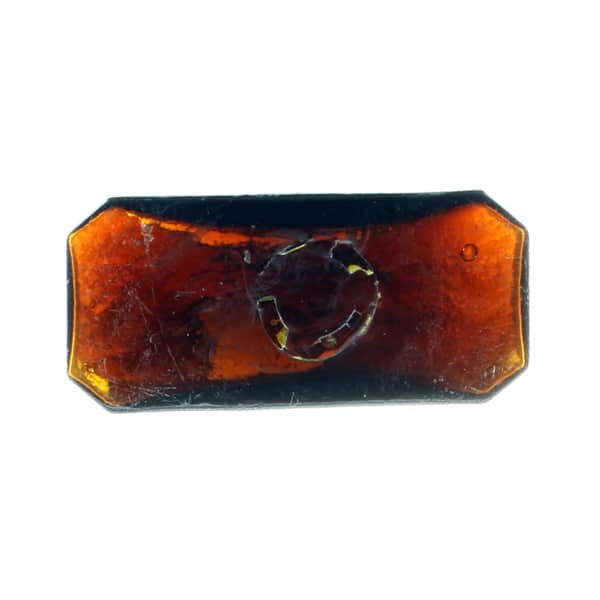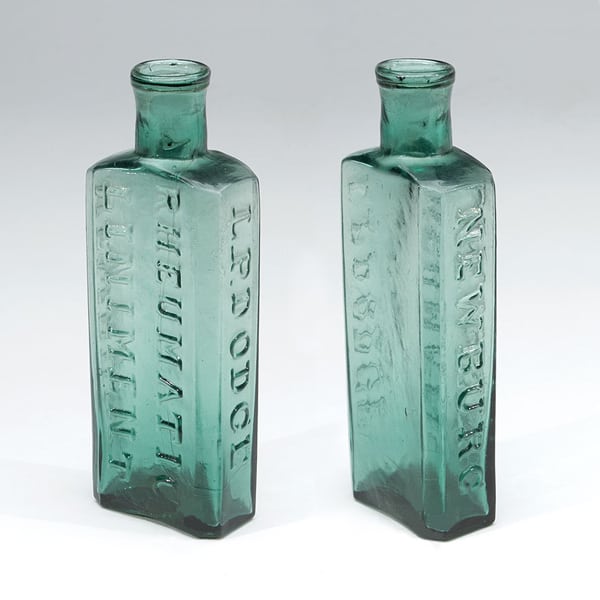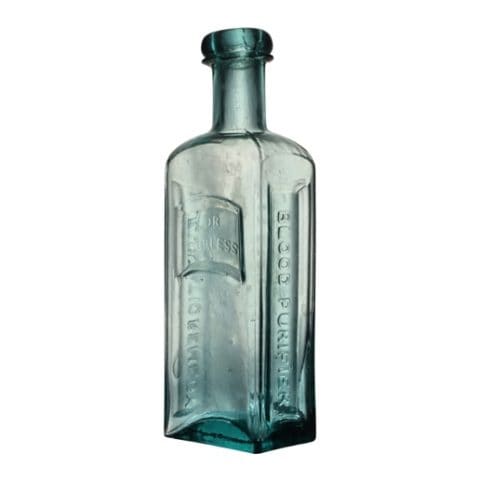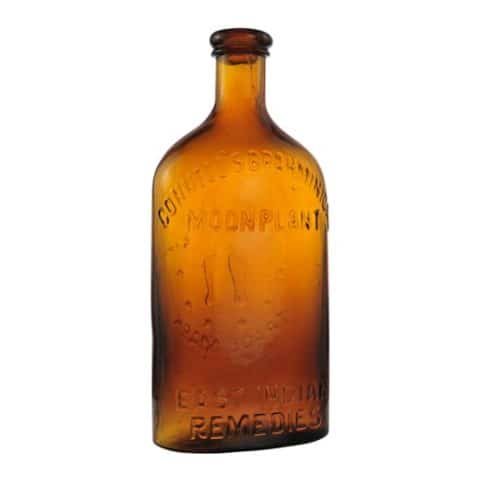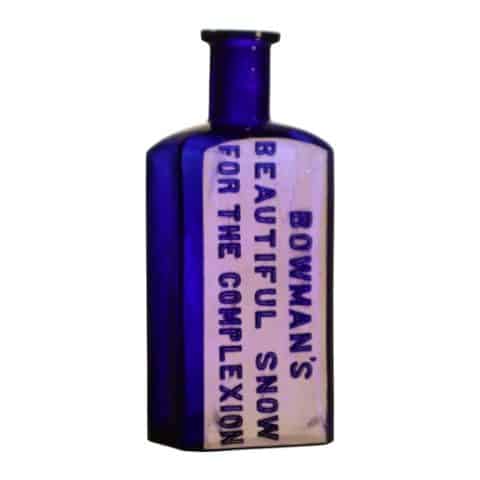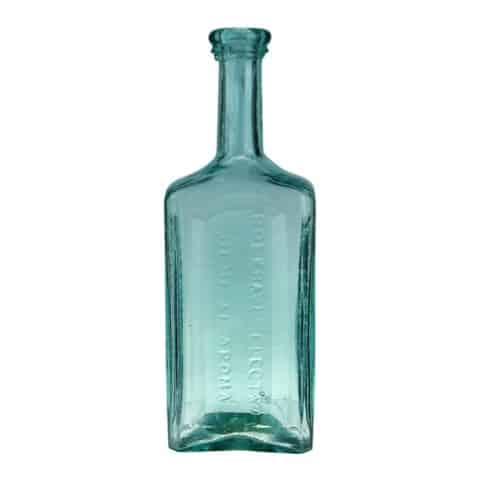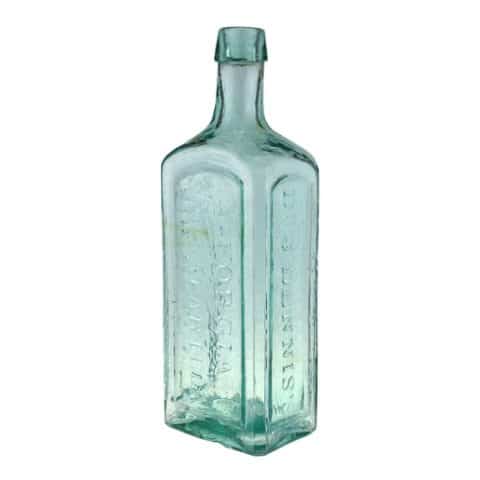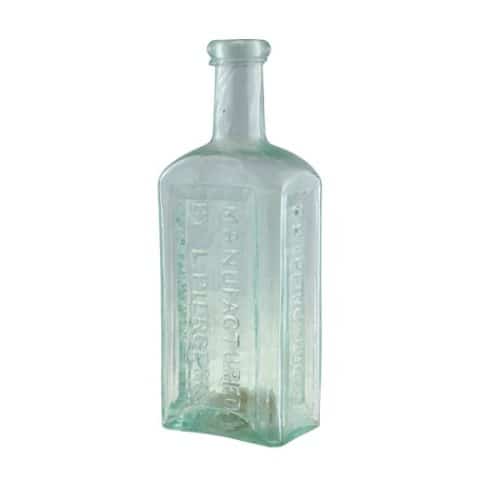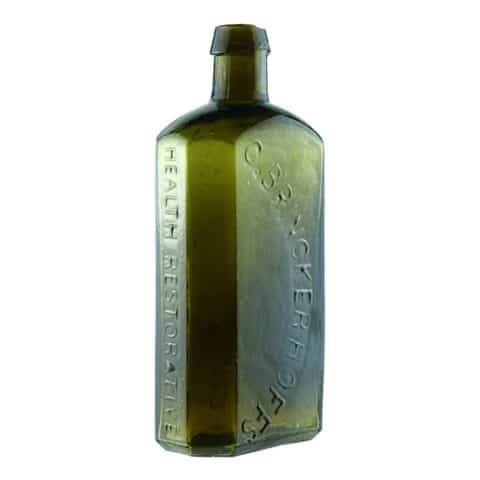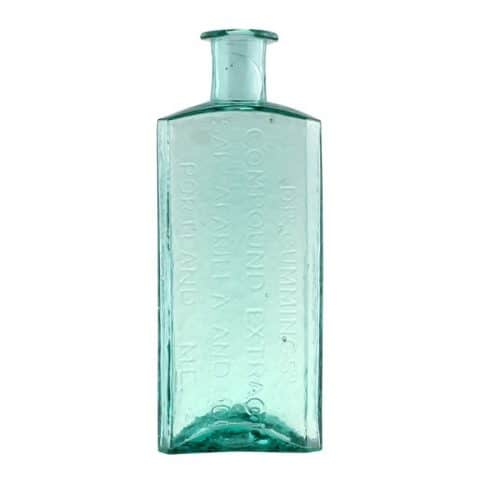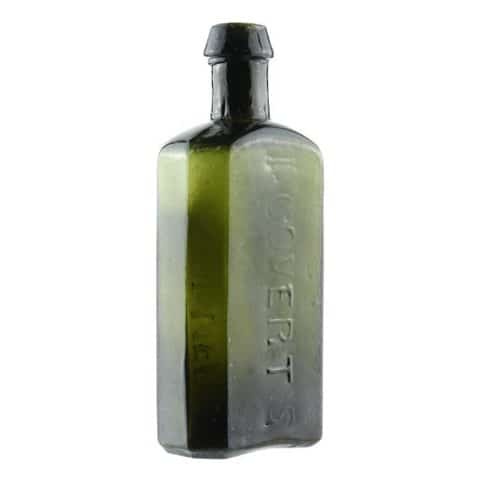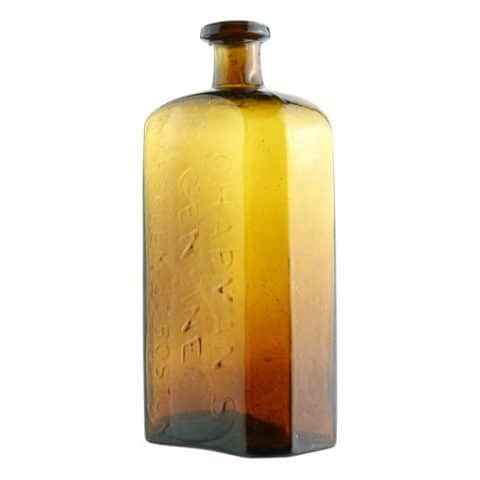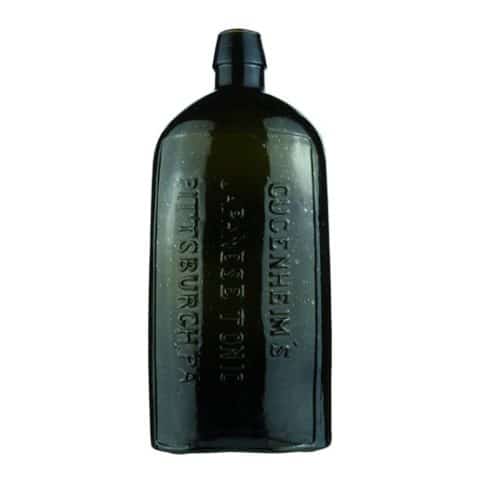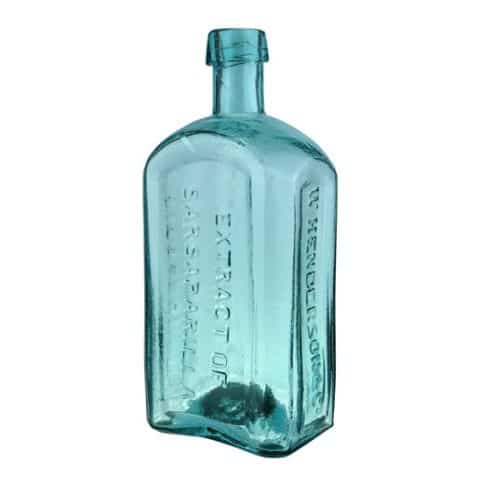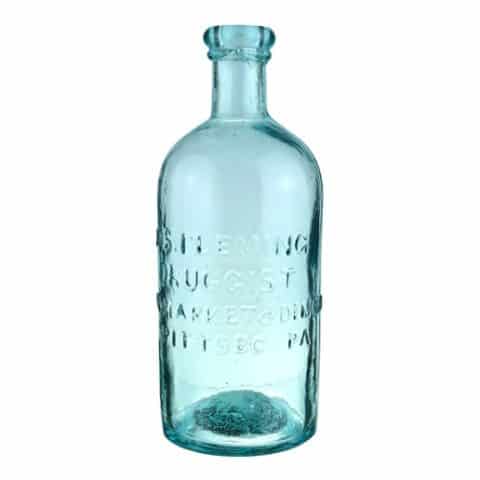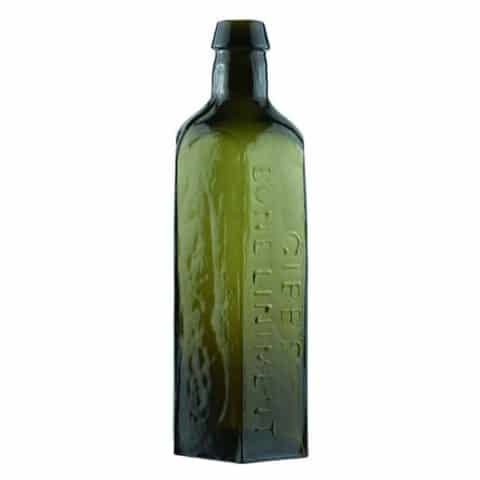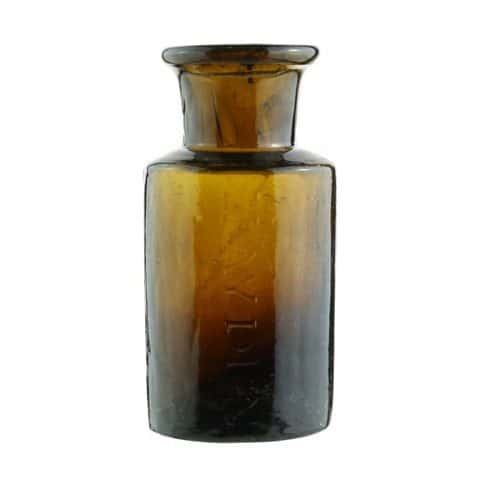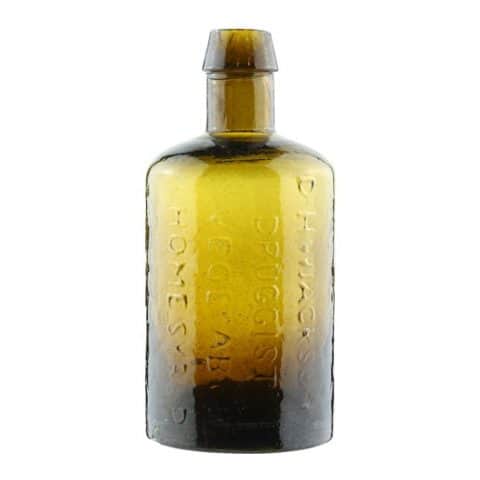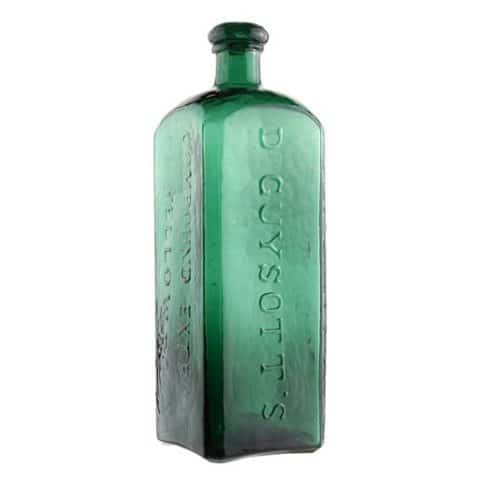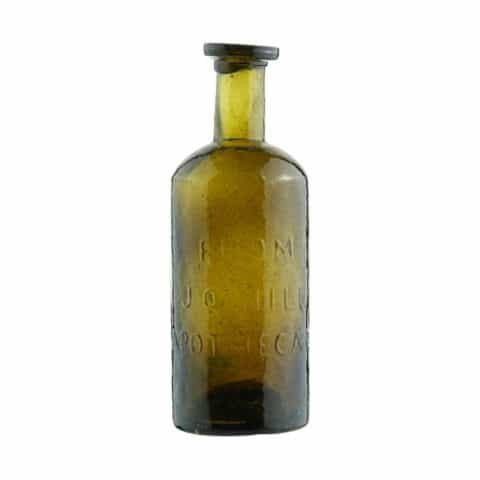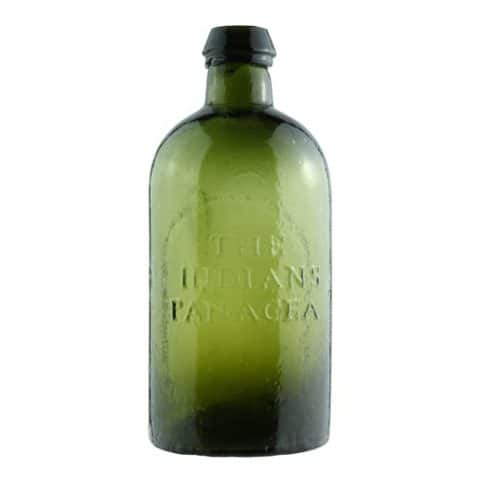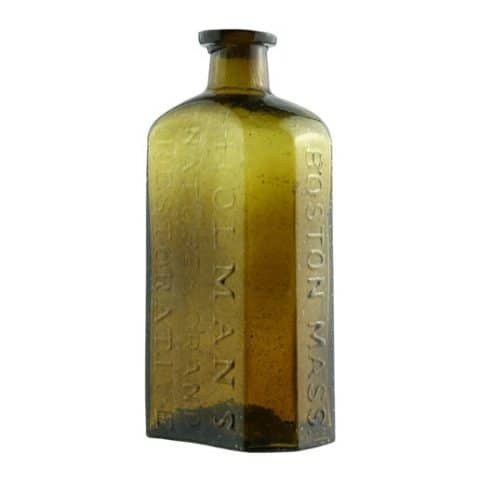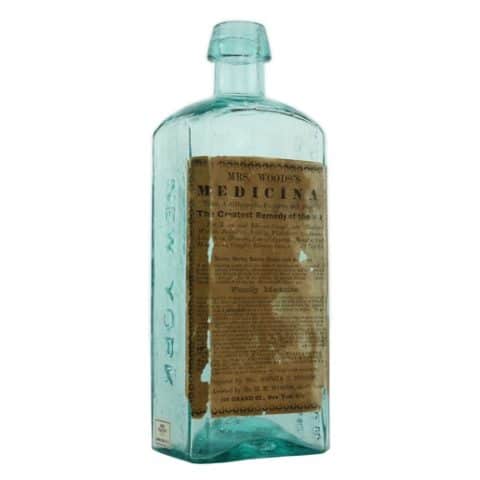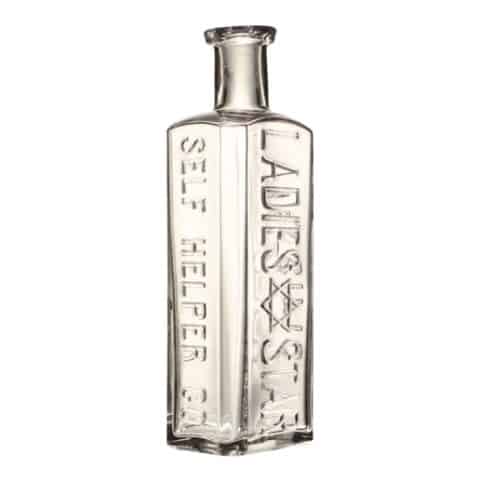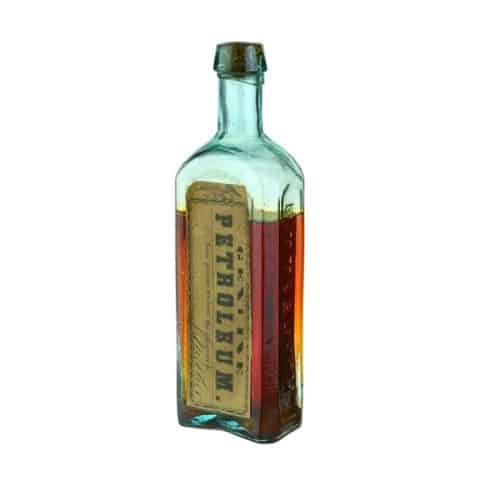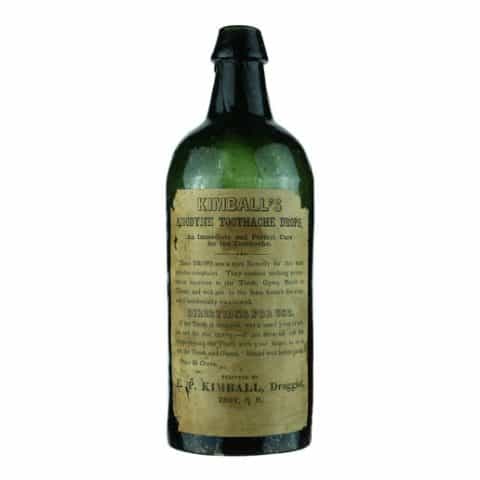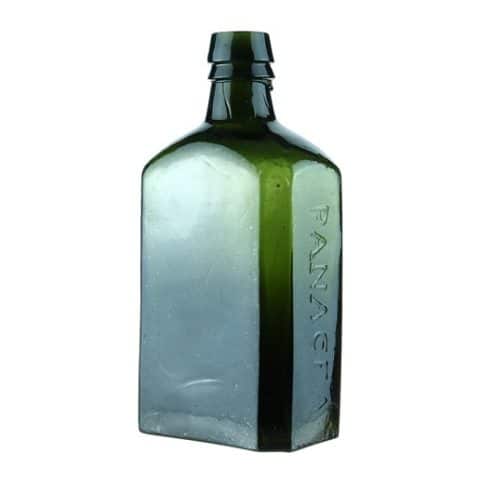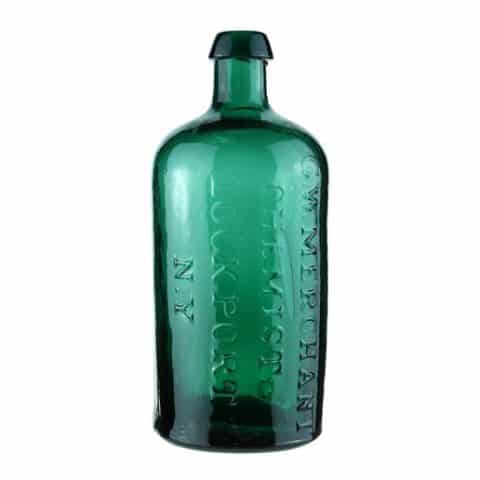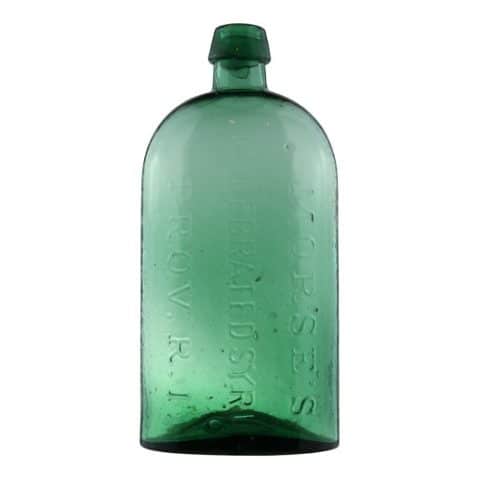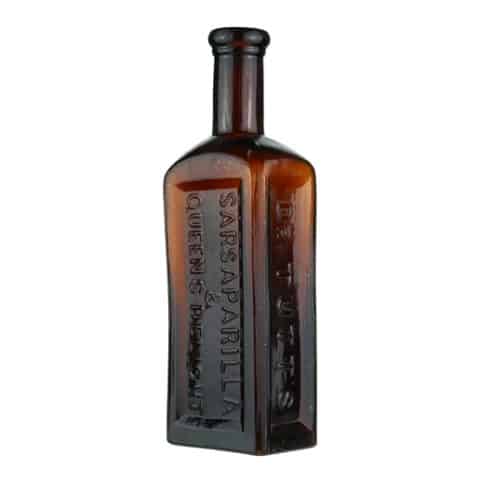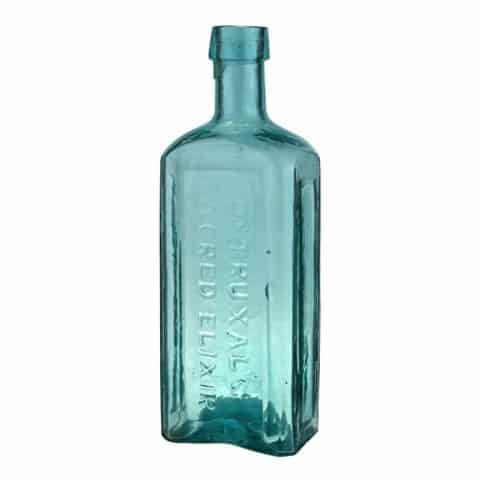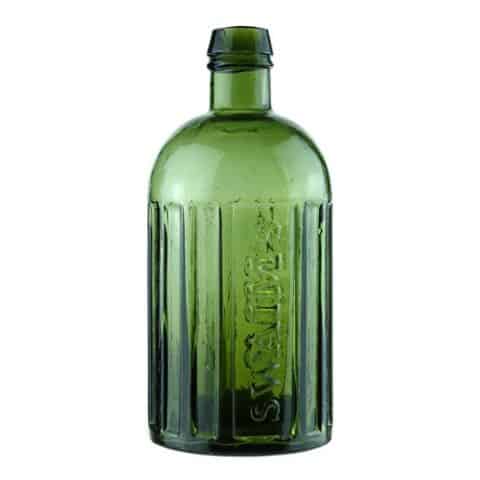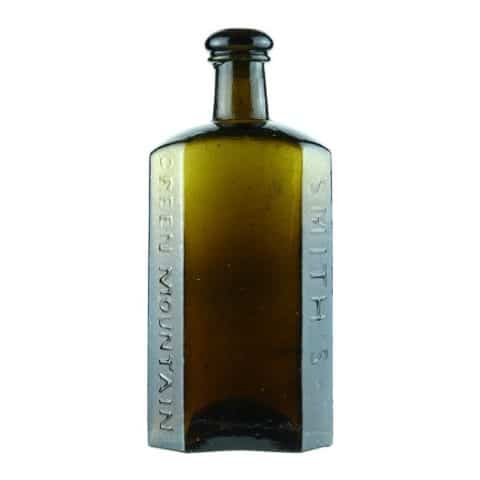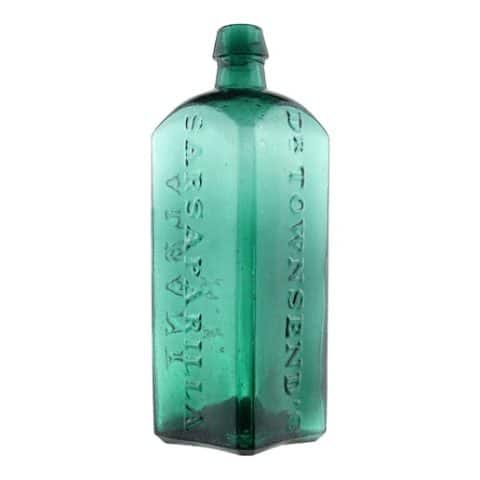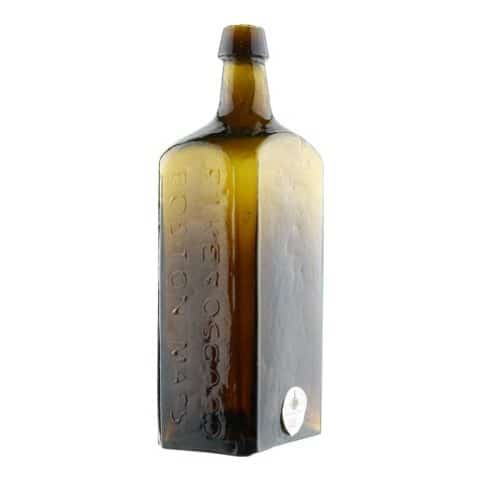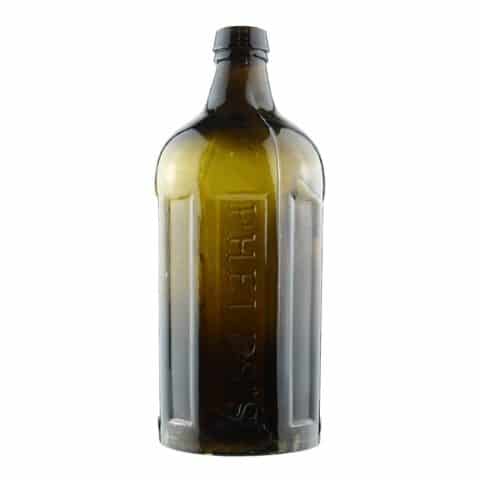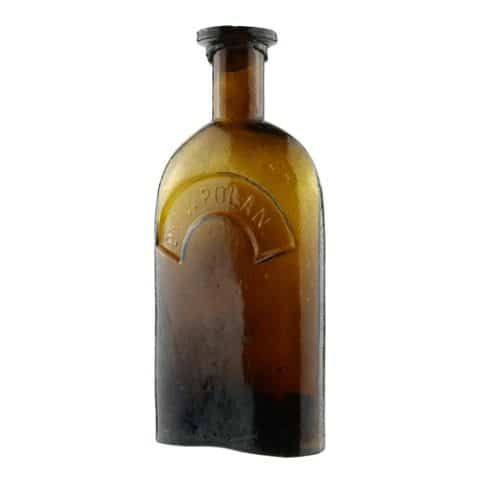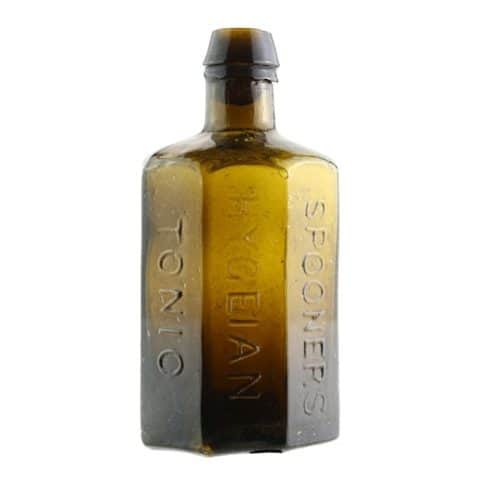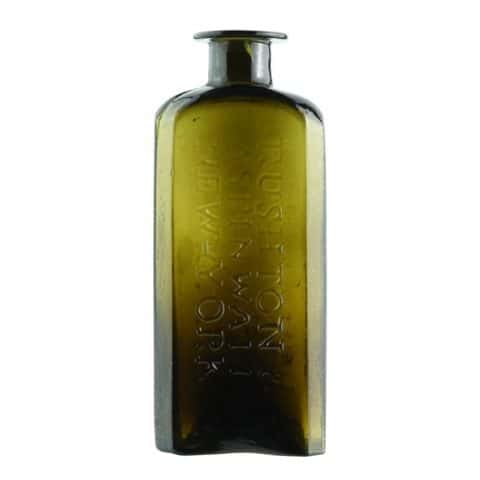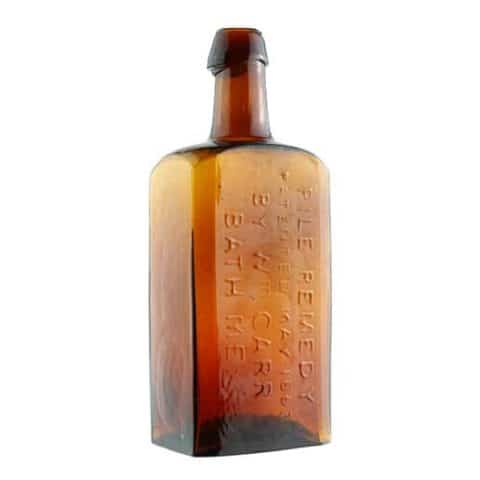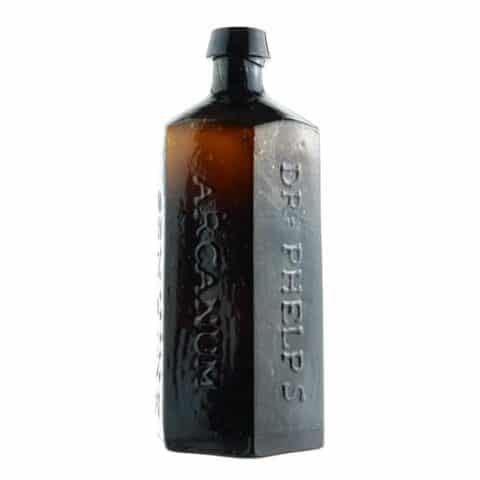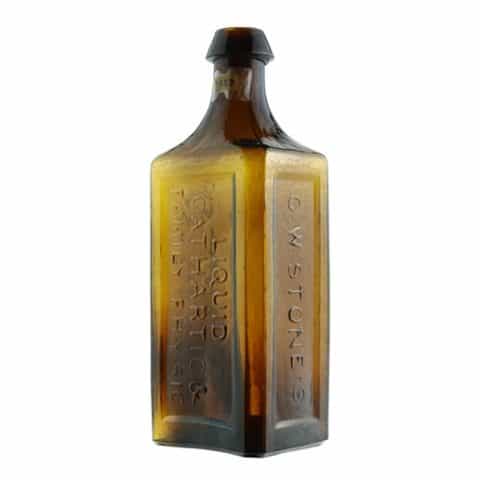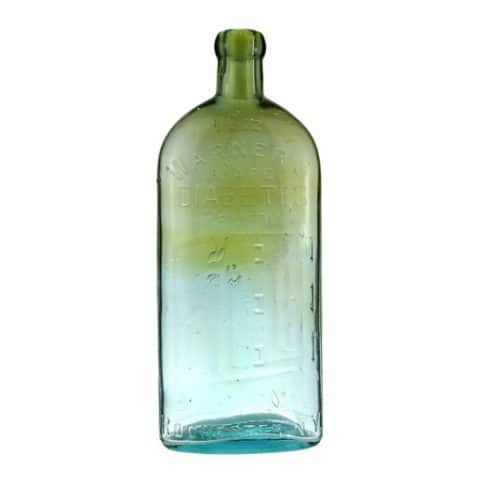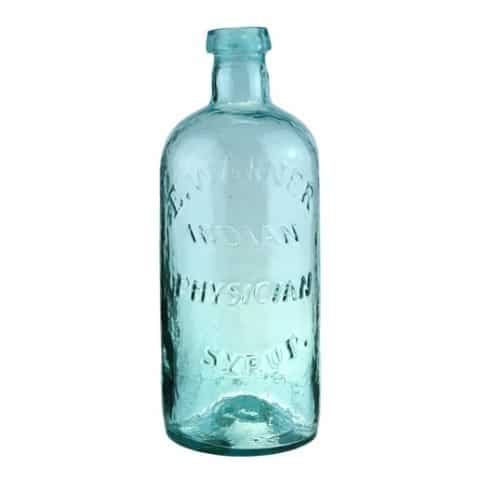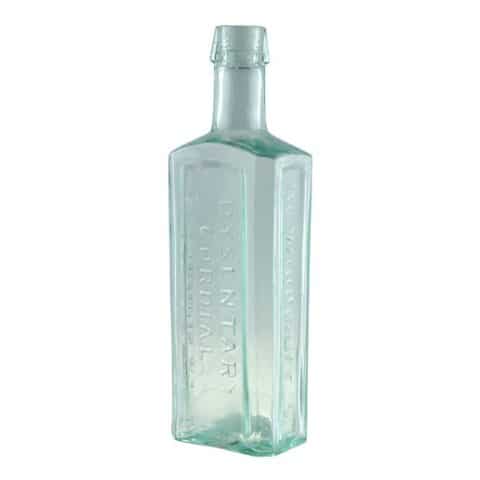L.P. Dodge Rheumatic Liniment Newburg
L. P. Dodge Rheumatic Liniment
Newburg
Levi P. Dodge, Newburgh, New York
Deep Old Amber Rectangular Medicine
Provenance: Chris Bubash Collection
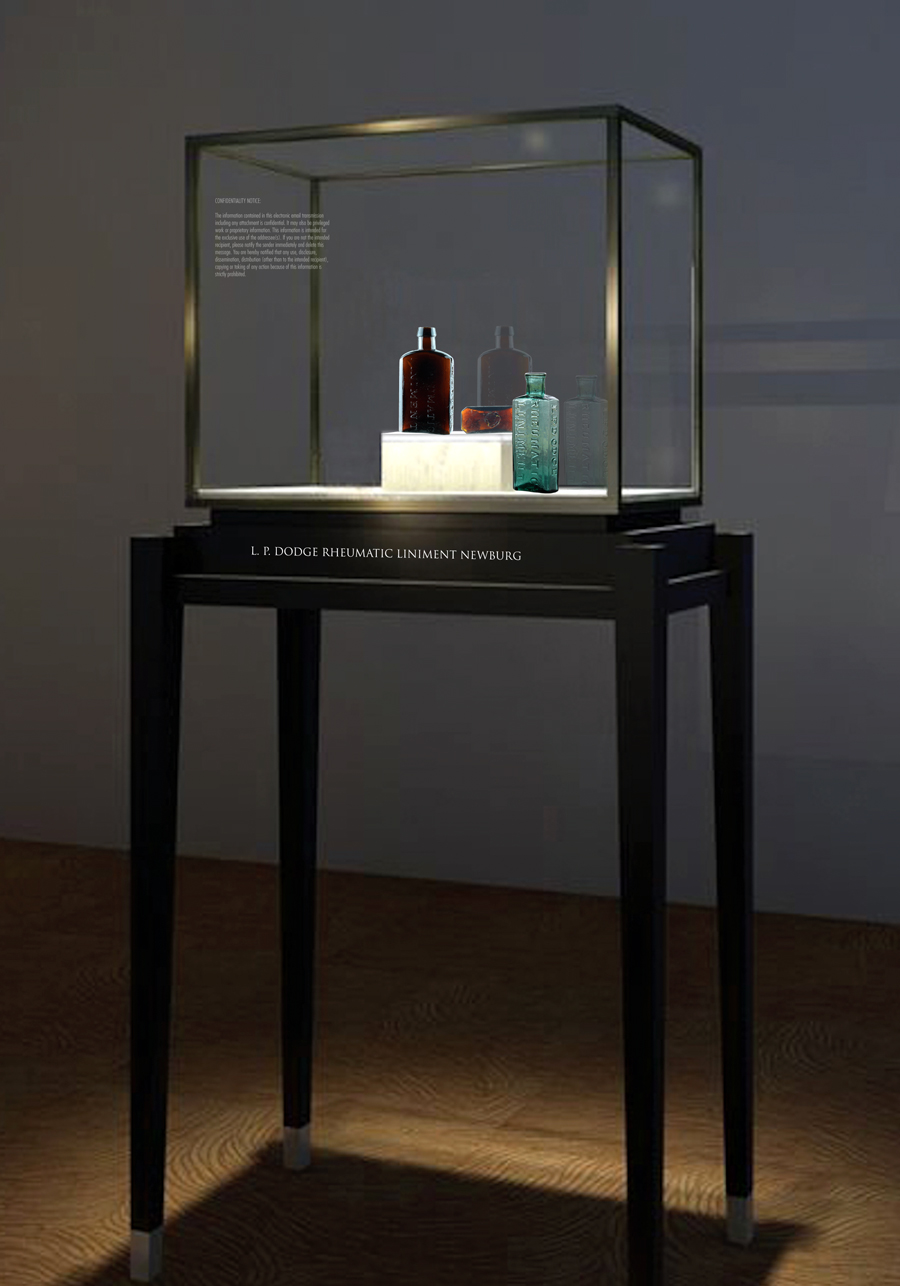
We are looking at an extraordinary example of a Dodge’s Rheumatic Liniment medicine bottle that was manufactured in the mid-1800s in Newburgh, New York by Levi P. Dodge. The glass is described as a rich, medium-to-deep old amber, with almost a tobacco coloration. The 5 7/8″ tall, “tombstone form” bottle is rectangular and has beveled corners, an applied sloping collar mouth, and a pronounced blowpipe pontil. The bottle is embossed on three faces with a serifed typestyle, shoulder to base, ‘L. P. DODGE’ (side panel 1), RHEUMATIC LINIMENT’ (front panel 2), and ‘NEWBURG’ (side panel 3). Notice the missing ‘”H” in “Newburgh” recalling earlier and later spellings of Pittsburgh. It could have also been an error. The opposite bottle face is smooth and is where a paper label would have been placed.
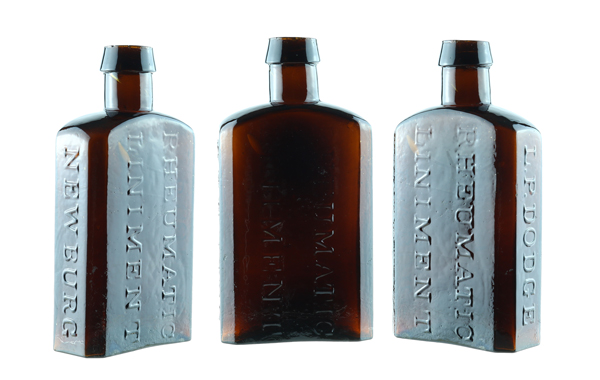
You can find two molds for L. P. Dodge Rheumatic Liniment Newburg bottles. They are both embossed with the same copy. The second mold is usually in a thinner profile in green glass with a rolled lip. This mold is extremely rare and is represented in the museum display.
Levi Peabody Dodge was a life-long resident of Newburgh, New York. He was born on February 10, 1800, in Newburgh and was the son of William P. Dodge, who was the son of Reuben Dodge, a Lieutenant in the Massachusetts Line in the army of the Revolution. The Newburgh area was first settled in the early 18th century by the Germans and British. During the American Revolution, Newburgh served as the headquarters of the Continental Army. When L. P. Dodge died on August 23, 1872, in Newburgh, his wife was noted as Sarah Jane Dodge, and their children were Adela M. Banger, Alida Dodge Holmes, William Foster Dodge, John Peabody Dodge, Harriet Amanda Dodge, James Jermain Dodge, and Ruth Peabody Dodge.
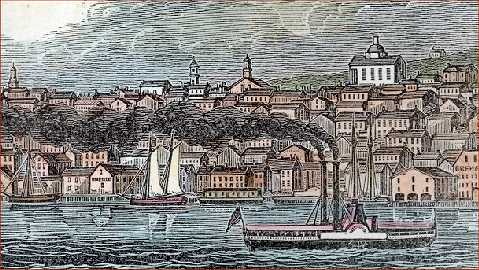
L. P. Dodge was involved in many things in his life though he was primarily listed as a manufacturer of one sort or another. Though records are sparse, in 1846, L. P. Dodge advertised in New York newspapers about his “Newburgh Summer Retreat.” Dodge said the boarding establishment was open for the reception for those who wanted to enjoy the advantages. This was a large house that was “pleasantly situated on Academy Hill, within five minutes’ walk of the steamboat landing. The prospect is one of the richest on the Hudson River, affording an unobstructed view of Newburgh Bay, and a fine view of West Point, the Highlands, Mountains, Scenery, Steamboats, &c.” Families or single persons were offered the opportunity to board by the day or week for a reasonable price.
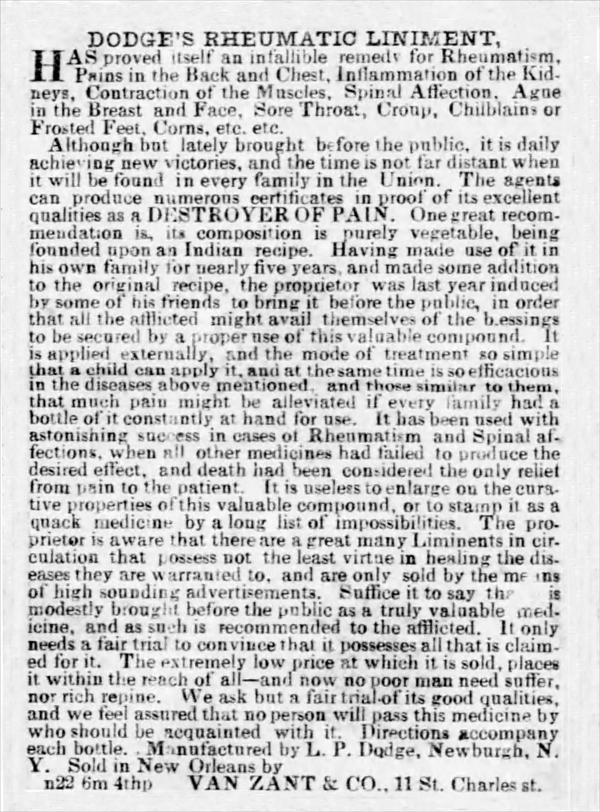
At about the same time, advertisements were appearing in New York and New Orleans newspapers from 1846 to 1852 for Dodge’s Rheumatic Liniment. The medicine was reported to have “proved itself as an infallible remedy of Rheumatism, Pains in the Back and Chest, Inflammation of the Kidneys, Contraction of the Muscles, Spinal Affection, Ague in the Breast and Face, Sore Throat, Croup, Chilblains, or Frosted Feet, Corns, etc., etc.” The advertising said that Dodge’s Rheumatic Liniment was manufactured by L. P. Dodge, Newburgh, N. Y. and sold for 50 cents a bottle in New Orleans by Van Zant & Co. Directions would accompany each bottle sold.
Perhaps Levi P. Dodge’s most significant and most remembered accomplishment was his pump inventions. The first 1856 illustration below says, “No. 999—Suction and Force Pump. L. P. & W. F. Dodge, Newburgh, N. Y. cast iron. These pumps are much used and bear the test of use. They are arranged with metallic popet valves sliding horizontally on the piston-rod. A Silver Medal having been before awarded, a diploma certifying that feat.” The second illustration is the Empire State L. P. Dodge Patent Pump patented September 5, 1865.
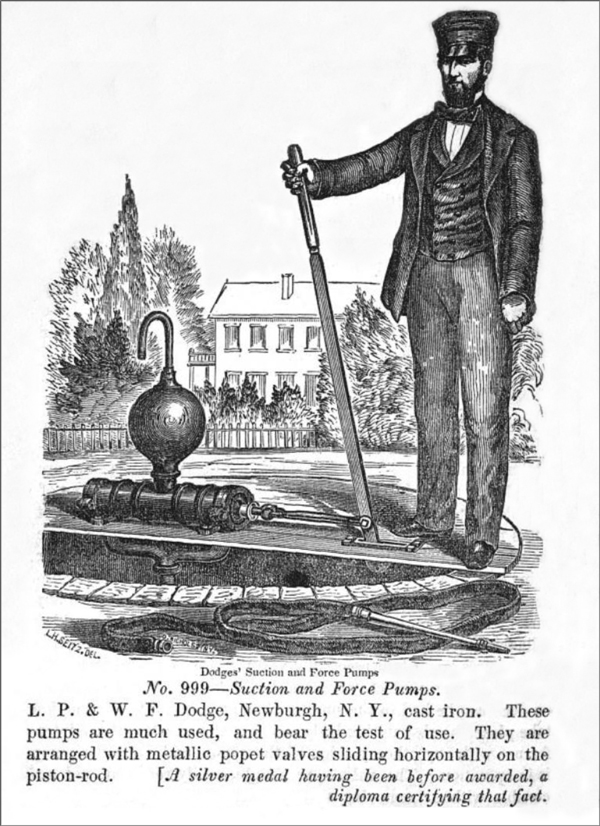
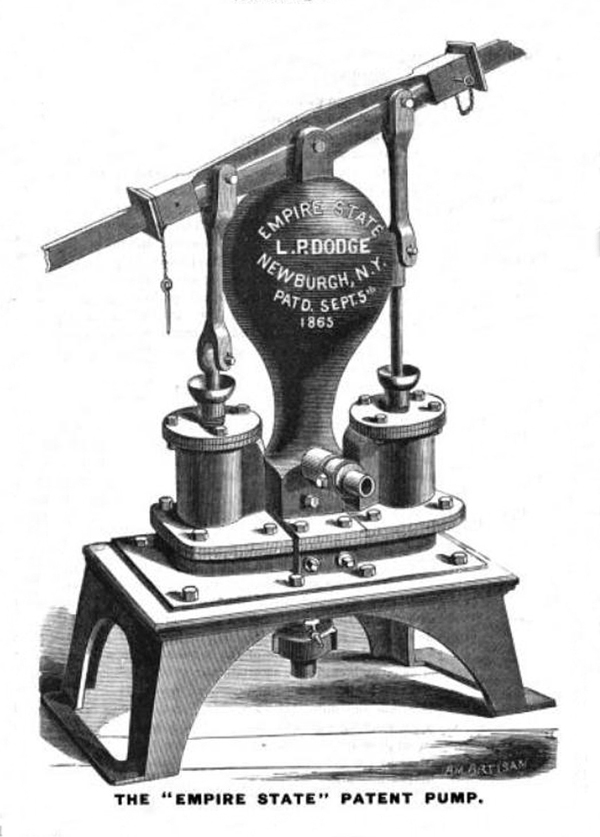
Primary Image: The L.P. Dodge Rheumatic Liniment bottle imaged on location by Alan DeMaison, FOHBC Virtual Museum Midwest Studio
Support Image: Auction Lot 208: “L.P. DODGE – RHEUMATIC / LINIMENT – NEWBURG”, America, 1850 – 1860. Rich, medium-to-deep ‘old amber’, almost a tobacco coloration, rectangular with beveled corners, applied sloping collar – blowpipe pontil scar, ht. 5 7/8”; (professionally cleaned to original luster with a little scattered minor wear remaining; a little roughness including a 1/8” flake on the inner edge of the lip, otherwise excellent). A very scarce pontiled medicine, one that does not come around often. – John Pastor, American Glass Gallery, Auction #28
Support Image: Auction Lot 19: “L.P. Dodge / Rheumatic / Liniment / Newburg” Medicine Bottle, America, 1840-1860. Rectangular with beveled corners, light bluish-green, inward rolled mouth – tubular pontil scar, ht. 5 inches. AAM pg. 143 A crude example with exterior surface swirls and bold embossing. Fine condition. – Norman Heckler Jr. & Sr., Norman C. Heckler & Company, Auction #161
Support Image: Illustration of Empire State L. P. Dodge Patent Pump – American Artisan, A Weekly Journal of Arts, Mechanics, Manufactures, Engineering, Chemistry, Inventions, and Patents · Volume 9, 1869
Support: Advertisement for No. 999—Suction and Forse Pump – Documents of the Assembly of the State of New York, Issues 215-216, By New York (State). Legislature. Assembly, 1856
Join the FOHBC: The Virtual Museum is a project of the Federation of Historical Bottle Collectors (FOHBC). To become a member.

